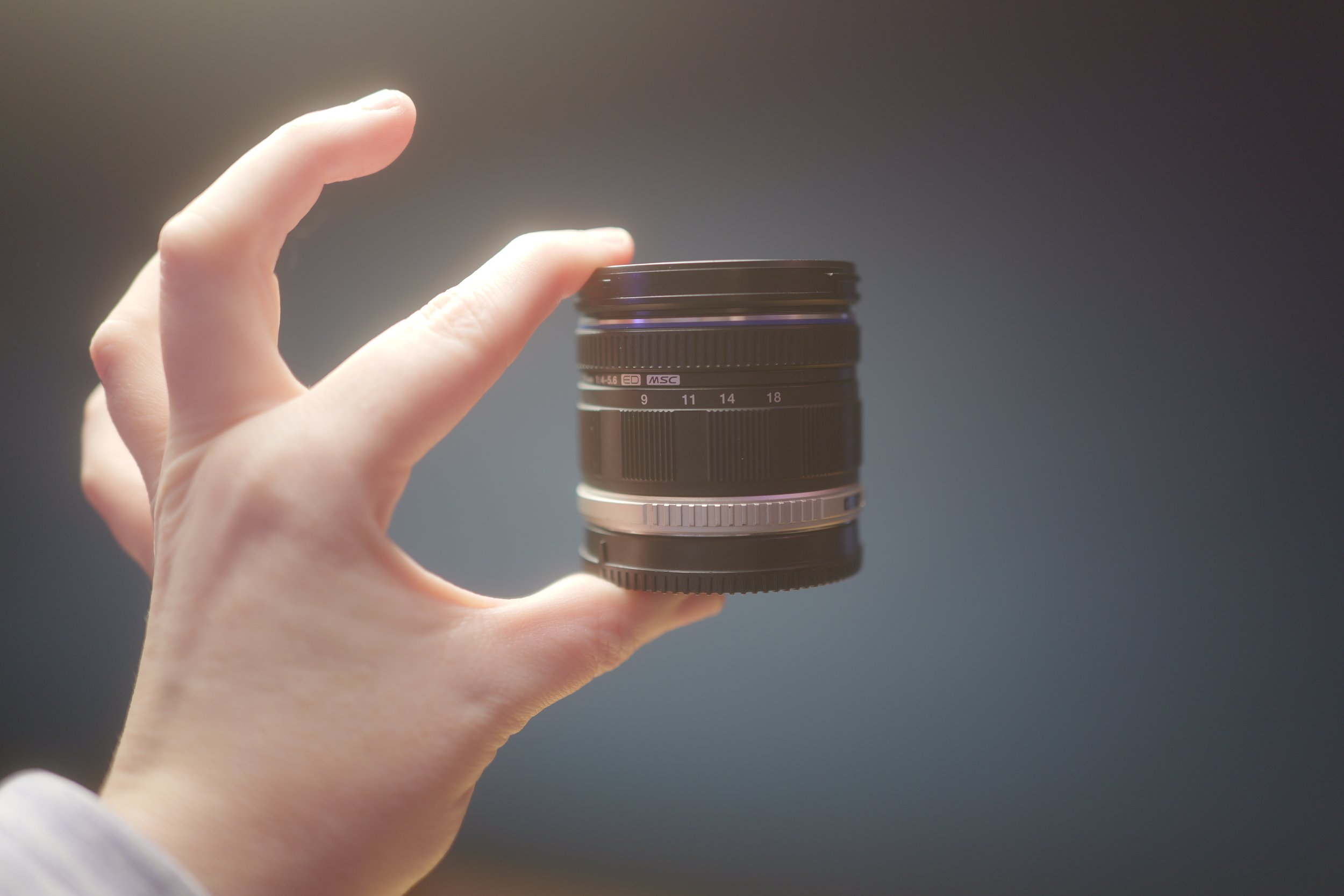Olympus M.Zuiko 9-18mm f4-5.6 Long Term Review
YouTube Video Review here!
The Olympus 9-18mm wide angle micro four thirds lens
Here's my review of the epic, yet flawed! Olympus 9-18mm f4-5.6 wide angle lens for micro four thirds. It might just be the best value wide angle lens for micro four thirds out there. Learn all about it here!
There are two versions of the 9-18mm f4-5.6 lens available on the market. The Olympus version, released in 2010, costs around £250 used. There is also a rebranded OM System version, which appears to be essentially the same lens with a different look and a more stylish lens hood. The newer version costs around £600, which, ya know… doesn’t seem like that great of a buy at the moment. Hopefully it will come down in price.
I've had the original version of this lens since 2017, and it has accompanied me on many adventures. While it isn't fully weather-sealed, it has handled dust on trails and small amounts of drizzle and snow without any issues.
MPB have great deals on the original, which I recommend over the rebranded version. You can find them here MPB UK, MPB US & MPB EU.
(or Amazon here, if that floats your boat)
9-18mm Lens — small and mighty!
The Olympus 9-18mm lens weighs just 155g, which is impressive for a wide-angle lens. It is the lightest and smallest wide-angle lens in the entire micro four-thirds system. However, it does have a plastic build, which is noticeable in its feel.
I use this lens primarily when hiking and traveling, where it serves me great for landscapes. It’s also light enough that I can stick it in my bag “just in case”.
Its characteristics can be both pros and cons, depending on your individual situation and requirements for the lens. Yes, it’s light and plastic-y, but that makes it portable!
Annoying Lens Features
One of the main benefits of the micro four thirds system is that you can have a compact kit that performs well. This lens fits the bill, but it has a small lever that you need to use to open and close it. I've often picked up the camera, put it to my eye, and forgotten to unlock the lens.
To avoid this, I find it best to leave the lever open when I'm out and about, so I don't have to unlock it each time.
As you can see, this lens has its share of pros and cons…!
Good and Bad… Lens Range & Issues
The Olympus 9-18mm lens is incredibly versatile. With this lens, you can capture ultra-wide shots at 9mm and more conventional ones at 18mm. That’s the “good.'“
Now for the bad. My first copy of this lens served me well until it eventually stopped working. It failed during a hike in Madeira. I believe this was a stroke of bad luck rather than a common issue with the lens. The problem was that the lens wouldn't fully connect to the camera, so the camera couldn't recognize it. Repair costs for this issue were about the same as buying a new lens, which is why I now own two of them.
You could say, then, that despite its flaws this is a lens that’s so good I bought it twice.
Competition
So there are some competitors with this lens. I’ve been lucky enough to try most of them now. Here is a quickfire guide. On the Olympus side we have:-
Olympus 7-14mm f2.8
Cost: Around £700
Weather Sealed
Metal Build
Weight: 534g
Domed Front Element
Olympus 8-25mm f4
Cost: Around £950
Weather Sealed
Metal Build
411g
Flat Front Element
On the Lumix side we have:
Lumix 7-14mm f4
Cost: Around £500
Not Weather Sealed
Blastic Build
Weight: 300g
Domed Front Element
Lumix 8-18mm f2.8-4
Cost: Around £800
Weather Sealed
Metal Build
Weight: 315g
Flat Front Element
You can see my video review for this particular lens here.
Personally, I still think that the original Olympus 9-18mm lens is the best value for money out of the bunch. It’s ridiculously sharp and portable, and much more affordable. You can find the best used deals on any of the lenses I’ve mentioned here at MPB:-
Olympus 9-18mm Lens Sharpness
One of the things I love about this lens is its range; once it's on my camera, I rarely take it off because it’s so versatile. At 9mm, you get a beautiful, crisp wide-angle shot, while at the long end, you have a 36mm full-frame equivalent.
The lens is sharpest at 9mm, which is ideal because that focal length is likely why you’re buying the lens. At the 18mm end, there is a slight fall-off in sharpness at the edges, but it’s manageable. Considering its size, weight, and affordability, this is a small price to pay.
Another feature I appreciate is the lens's flat front element. Many competing lenses have domed front elements, which can cause various issues. Domed lenses make it tricky to add filters and can alter the appearance of flares when light hits the lens. With the 9-18mm lens, the flat front element allows for beautiful starburst effects.
Best Wide Angle Lens for Micro Four Thirds?
Despite the Olympus 9-18mm lens not being the most robust, not the sharpest at the long end, being somewhat temperamental, having an annoying lever feature, and lacking weather sealing… I would still recommend it to anyone! I've used it extensively over the past seven years and have captured some of my all-time favourite photographs with it.
You can get your own Olympus 9-18mm lens, as well as many other excellent pieces of kit from MPB: MPB UK/ MPB US/ MPB EU.
You can also shop my Preset Packs over on the Micro Four Nerds Store.




















